传统RANS湍流模型大多基于Boussinesq湍流涡粘本构模型,该本构模型是在研究半无限大平板流构型中得到的.
2 部分代码%{
Turbulence - Project 2: RANS numerical simulation of a turbulent flow

through a channel.
Numerical models:
- Length mixing (0 equation)
- TKE (1 equation)
- k-epsilon (2 equations)
Problem description:
Data extracted from direct numerical simulations of fully developed plane
turbulent channel flow. URL:http://torroja.dmt.upm.es/channels/data/
Re_tau = 180 || Re_tau = 550 ||Re_tau = 950 || Re_tau = 2000
%}
clear; clc; help main; addpath(genpath(pwd));
% Figures save path
mkdir figures; addpath('.\figures\'); fpath = strcat(pwd,'\figures\');
savefigure = false;
% ------------------------------------------------------------------------%
% Problem configuration
% ------------------------------------------------------------------------%
global Re lm n nfrec sigma_k c cd c_mu c_ep1 c_ep2 sigma_ep h
Re = 180; % Re_tau
eps = 1e-3; % Right Hand Side (RHS) error -> stadistically stationary
nfrec = 1000; % Plot frecuency
h = 1; % Half of the channel (Dimensionless h==h^*=1)
n = round(Re/4); % Number of nodes of the mesh
CFL = 1; % Corant number associated with the viscous term
a = 1.5; % Exponent amplificator of nodes
mplot = true; % Mesh plot?
x0 = 0; % Left bound
xf = h; % Right bound
itmax = 2e6; % Max number of iterations
% ------------------------------------------------------------------------%
% DNS Data
% ------------------------------------------------------------------------%
% y/h || y+ || U+ || u'+ || v'+ || w'+ || -Om_z+ || om_x'+
% om_y'+ || om_z'+ || uv'+ || uw'+ || vw'+ || pr'+ || ps'+ || psto'+ || p'
load(strcat('Re', num2str(Re), '.prof'));
d(1).d(:,:) = eval('Re', num2str(Re)));
% y/h || y+ || dissip || produc || p-strain || p-diff || t-diff
% v-diff || bal || tp-kbal
load(strcat('Re', num2str(Re), '.bal.kbal'));
d(2).d(:,:) = eval('Re', num2str(Re), '_bal'));
% ------------------------------------------------------------------------%
err = 1; err1 = err; err2 = err; err3 = err; it = 1;
y(:,1) = mesh1D(n,a,x0,xf,mplot);
% y(:,1) = d(1).d(:,1); % Copy mesh DNS
% n = length(y);% Copy mesh DNS
yplus = y.*Re./h;
deltay(:,1) = y(2:end)-y(1:end-1);
deltaymax = max(deltay);
mu = deltay(1:end)./deltaymax;
% dt = CFL*min(deltay.^2*Re);
% ------------------------------------------------------------------------%
% Initialization
% ------------------------------------------------------------------------%
% Initialization by functions
% u = 15.*y.^(0.25); % Initialization: Mixing & TKE & k-epsilon
% k = 8.*y.^(0.25).*exp(-2.5.*y); % Initialization: TKE & k-epsilon
% ep = 0.75.*y.^(0.25).*exp(-5.*y); % Initialization: k-epsilon
ep = 500.*y.^(0.25).*exp(-5.*y); % Initialization: k-epsilon
% ep = 750*y.^(0.25).*exp(-5.*y); % Initialization: k-epsilon
% Accurate initialization - 1
y_dns = d(1).d(:,1);
u_dns = d(1).d(:,3);
k_dns = 0.5.*(d(1).d(:,4).^2 + d(1).d(:,5).^2 + d(1).d(:,6).^2);
ep_dns = -Re.*d(2).d(:,3);
u = spline(y_dns,u_dns,y);
k = spline(y_dns,k_dns,y);
% ep = spline(y_dns,ep_dns,y);
% Accurate initialization - 2
% load('kepsilon_2000.mat')
% u = spline(y_kepsilon,u_kepsilon,y);
% k = spline(y_kepsilon,k_kepsilon,y);
% ep = spline(y_kepsilon,ep_kepsilon,y);
% ------------------------------------------------------------------------%
% Turbulent viscosity from DNS data:
dudy_dns = difx(u_dns,y_dns);
tau12_dns = d(1).d(:,11);
nut_dns = -tau12_dns./dudy_dns;
nut_dns = nut_dns(1:end-1); % Remove wrong value
% ------------------------------------------------------------------------%
nut_spline = spline(y_dns(1:end-1),nut_dns,y);
dt = CFL.*(1/Re+abs(nut_spline(1:end-1))).^(-1).*deltay.^2;
dt = [dt;dt(end)];
nyplus1 = find(yplus<1,1,'last');
% dt = min(CFL.*(1/Re+abs(nut_spline(1:end-1))).^(-1).*deltay.^2); % Fixed step size
% ------------------------------------------------------------------------%
% Display configuration
disp('---- Configuration ----')
fprintf('y = %.3e \n', h)
fprintf('n = %d \n', n)
fprintf('dy_min = %.3e \n', min(deltay))
fprintf('dy_max = %.3e \n', deltaymax)
fprintf('dt_min = %.3e \n', min(dt))
fprintf('CFL = %.3e \n', CFL)
fprintf('Re = %.3e \n', Re)
fprintf('eps = %.3e \n', eps)
fprintf('Nodes y+< 1 = %d \n', nyplus1)
disp('-----------------------')
if nyplus1 < 2
disp('ATTENTION! number of nodes in y+ < 1 is less than 2.')
end
%% Mixing length model
mixing;
%% TKE model
tke;
%% k-epsilon
% kepsilon; % Chien
% kepsilonRM; % Chien + fmu Rodi & Mansour
% kepsilon2; % Nagano-Tagawa
kepsilon3; % Launder-Sharmar
% kepsilon4; % Lam-Bremhorst
%% k-omega
% komega; % Not yet
%% Load results for plotting
npoint = 1; % Plot per npoint
load_results;
%% Plot Mixing, TKE and k-epsilon
plotallu;
plotallk;
plotallep;
plotallnut;
%% Plot in wall units (dots)
dnsplot1 = 20;
dnsplot2 = 8;
plotalluplus;
plotallkplus;
plotallepplus;
plotallnutplus;
%% Plot in wall units (lines)
dnsplot1 = 16;
dnsplot2 = 8;
plotalluplus2;
plotallkplus2;
plotallepplus2;
plotallnutplus2;
%% Plot Viscous vs Reynolds stresses
plottau;
%% Plot Production vs Dissipation
plotalllep_prod_dis_plus
%% Velocity-defect law
plotvelocity
%% Plot only k-epsilon models
% plotkep_uplus;
% plotkep_kplus;
% plotkep_epplus;
% plotkep_nutplus;
3 运行结果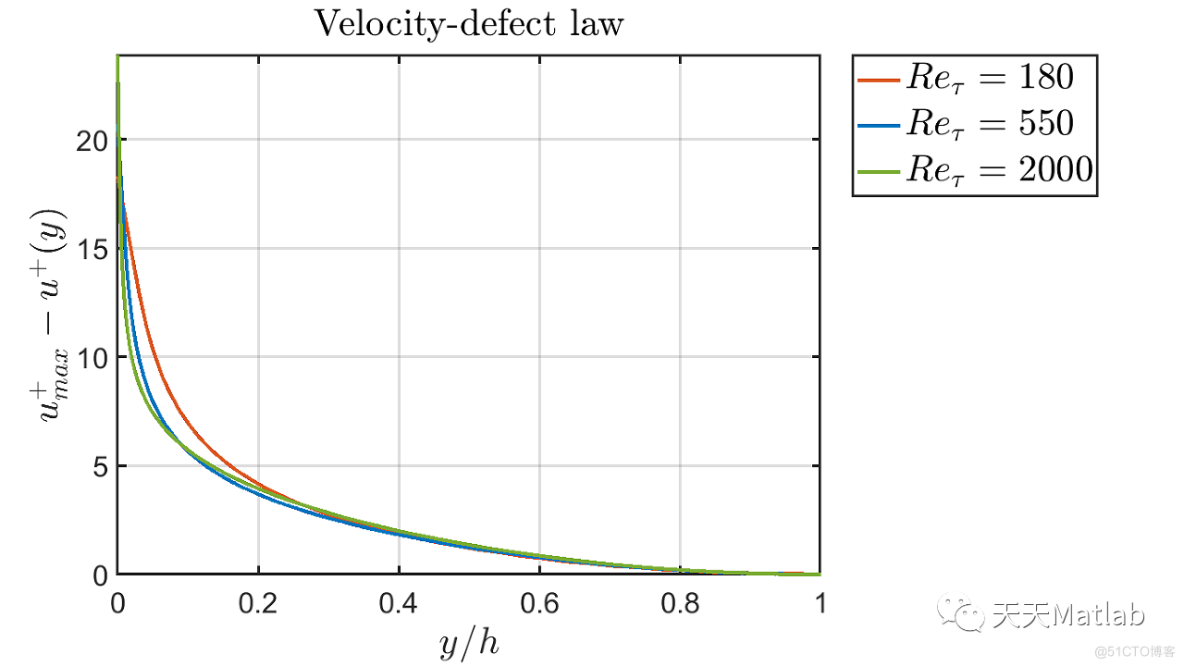
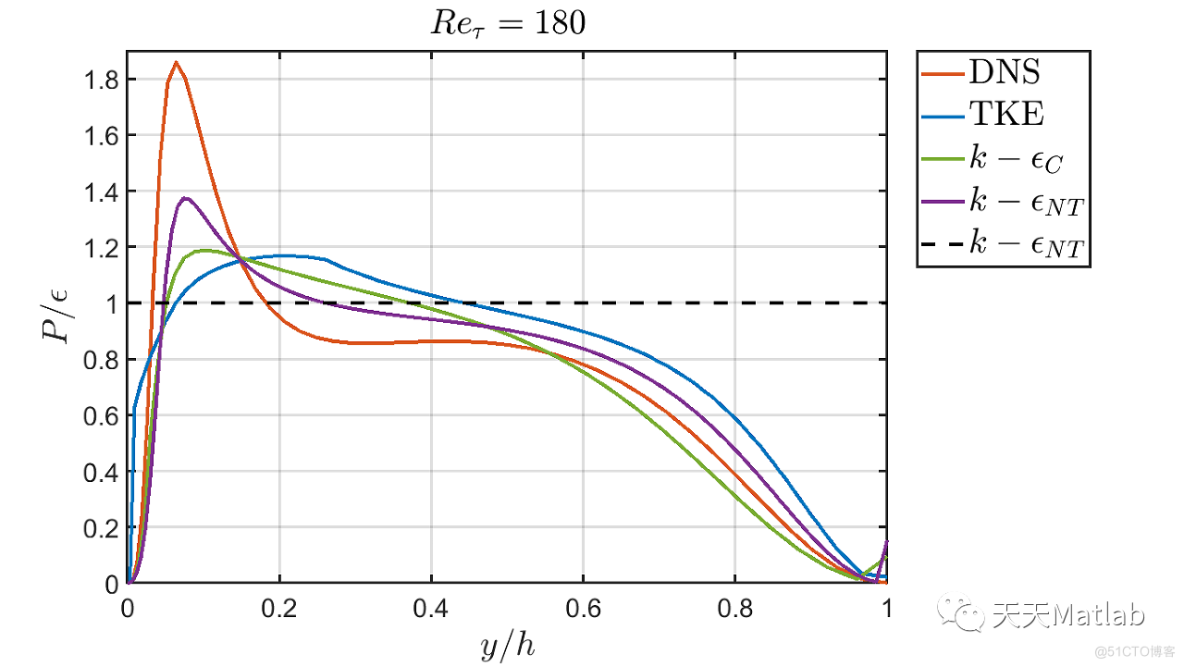
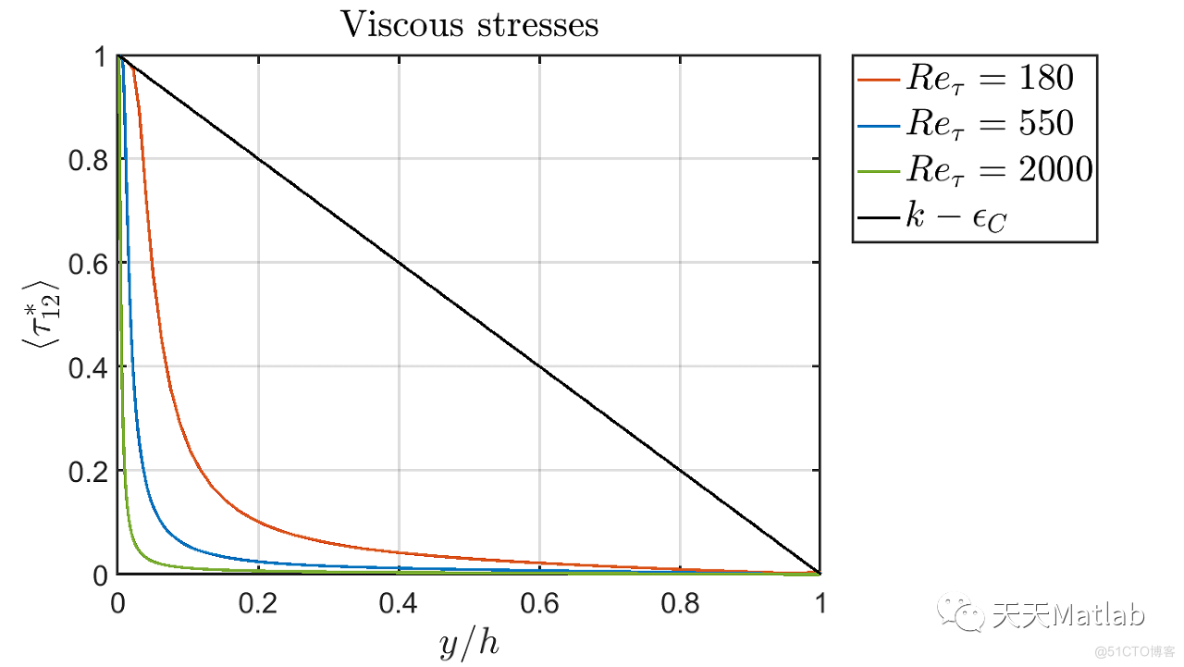
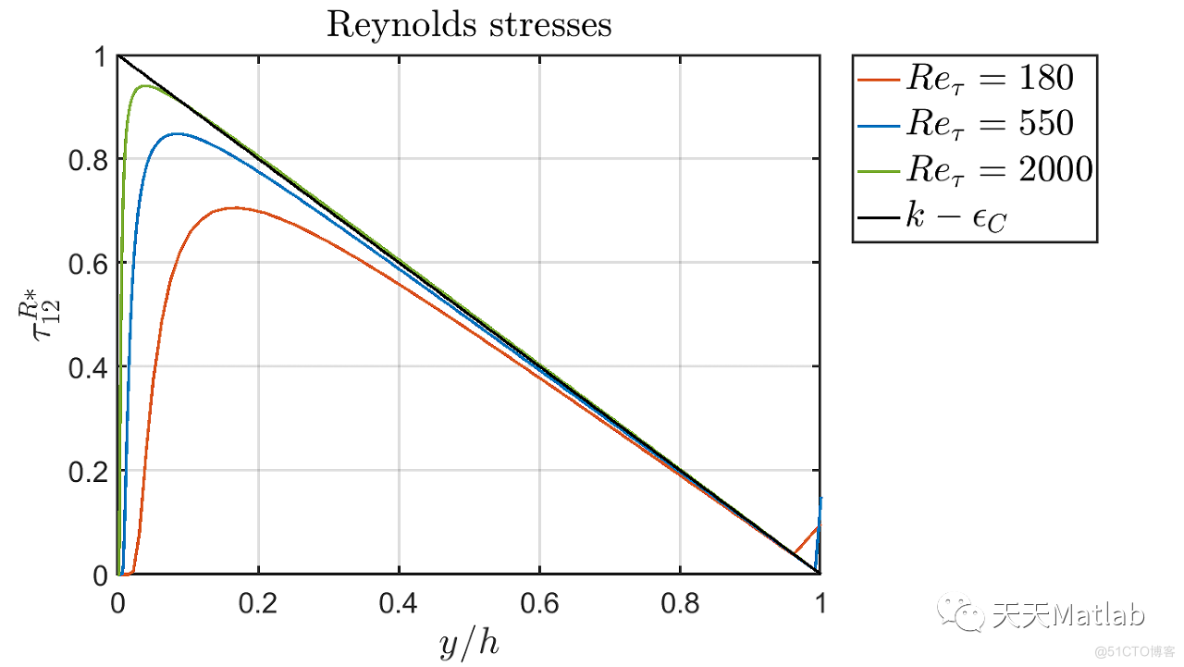
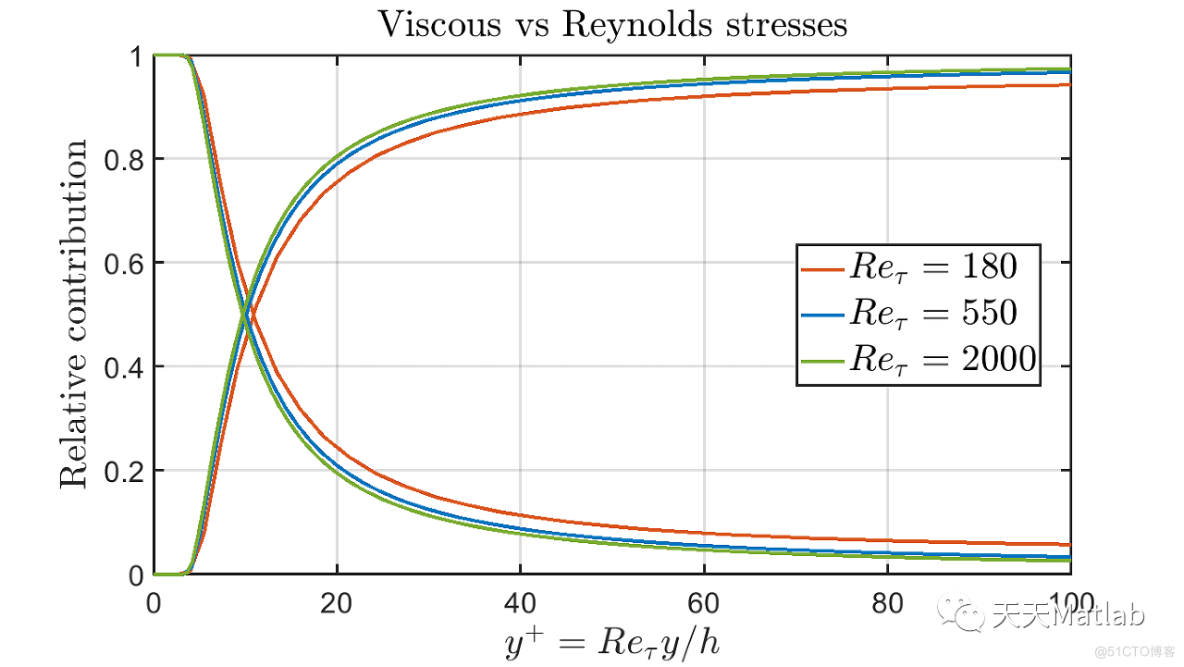 4 参考文献
4 参考文献[1]郭永涛, 徐弘一. 基于方、矩形环管直接数值模拟结果的各向异性RANS湍流模型构建[J]. 复旦学报(自然科学版), 2019, 58(01):5-17.
[2]王翔宇. RANS/LES混合方法在湍流精细数值模拟中的应用与改进[D]. 西北工业大学.
部分理论引用网络文献,若有侵权联系博主删除。





.png)

.png)

